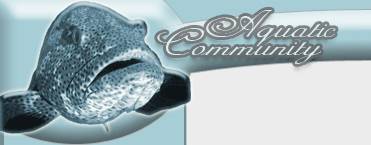Grizzly bears in Alaska
The Grizzly bear is not a separate species of bear; it is a type of Brown bear (Ursus arctos). In certain regions the Brown bears have white long hairs decorating their shoulders and back. Since this gives them a grizzled look, they are called Grizzly bears. The white hairs are coarse guard hairs that tend to be whiter and more silver tipped as the Grizzly bear ages.
In the U.S., the term Grizzly bear is more commonly used in the lower 48 states than in Alaska. The Grizzly bears in Alaska live in cool mountain forests and like to stay near rivers and the coastline.
The Grizzly bears in Alaska can reach a size of 7 feet (2.1 metres) and weigh up to 1,500 pounds (680 kilograms). The female Grizzly bears in Alaska are smaller than the males and will typically on reach 2/3 of the size of the male Grizzly bear.
The Grizzly bears in Alaska might look docile and cuddly, but they are extremely strong and can reach a speed of 35 miles per hours (56 kilometres per hours) when running. They will however only run for shore periods of time; when they travel longer distance they do so at a slow and comfortable pace. Just like all the other bears, the Grizzly bears in Alaska are so called plantigrade animals, which mean that they have flat feet.
The Grizzly bears in Alaska are solitary and night active animals. They are skilled predators but their diet is omnivore, which means that they include plenty of plant matter in addition to meat. They will catch larger insects, small mammals and fish and also happily feed on carrions. Larger Grizzly bears can prey on moose and other large herbivores. During the spring, many calves of these animals fall prey to Grizzly bears in Alaska. The vegetable part of the diet is made up by items such as roots, berries, bulbs of plants, fungi and nuts. They use their keen sense of smell to locate nuts hidden by squirrels. The Grizzly bears in Alaska can be attracted to garbage and leaving garbage outside is therefore not a good idea if you want to avoid encountering Grizzly bears in Alaska. If you find a carcass when you are hiking in Alaska, you should leave the spot since the carcass might belong to a bear that will return to protect his food.
The Grizzly bears in Alaska have a dense fur and large, distinguishing hump on their shoulders. The head is large and the muzzle elongated. The hump is actually a mass of extra muscles that provide the front legs of the Grizzly bear with superior strength. The front claws of the Grizzly bears in Alaska can grow up to 4.75 inches (12 centimetres) in length. The rear claws will only be roughly half as long.
The Grizzly bears in Alaska spend the winter resting in a den, but they are not true hibernators and sleep comparatively light. As the winter season commence, the falling snow will help insulating the den and keep the temperature up. The den can consist of a hollow log or a cave, and it can also be dug out by the bear in dry, stable soil. The Grizzly bears in Alaska will typically prefer to dig out their dens in sloping terrain.
Related articles:
Black Bear
Black Bear Attack
Black Bear Facts
Black Bear Hunting
Brown Bear
Brown Bear Facts
Brown Bear Habitat
Brown Bear hunting
Panda Bear
Giant Panda Bear
Panda Bear Facts
Panda Bear Information
Panda Bear Habitat
Grizzly Bear
Grizzly Bear Attacks
Grizzly Bear Habitat
Koala Bears
Koala Bear Facts
Polar Bear
Polar Bear Baby Cubs
Polar Bear Fact
Polar Bear Informtion
Polar Bear Habitat
